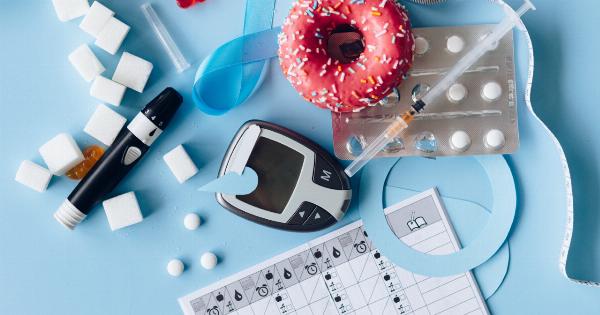Insulin is a crucial hormone for individuals with diabetes as it helps regulate blood sugar levels. Traditionally, insulin has required refrigeration to maintain its stability and effectiveness.
However, recent advancements in insulin technology have led to the development of insulin formulations that do not need refrigeration. This breakthrough has the potential to be a game changer for individuals with diabetes, particularly those in low-resource settings or those who have difficulty accessing refrigeration.
The Importance of Insulin
Insulin is a hormone produced by the pancreas that allows the body to use glucose from carbohydrates for energy or to store it for future use.
In individuals with diabetes, the body either does not produce enough insulin or cannot effectively use the insulin it produces. As a result, these individuals may experience high blood sugar levels, which can lead to various health complications.
For individuals with type 1 diabetes, insulin is a life-saving medication that is essential for their survival. They rely on regular insulin injections or the use of an insulin pump to manage their blood sugar levels.
On the other hand, individuals with type 2 diabetes may initially be able to control their condition through lifestyle changes, oral medications, or a combination of both. However, as the disease progresses, many individuals with type 2 diabetes also require insulin therapy.
The Challenges of Insulin Storage
One of the biggest challenges in insulin therapy has been the need for refrigeration. Insulin is a delicate molecule that can degrade and become ineffective if exposed to high temperatures or improper storage conditions.
This has posed significant barriers for individuals with diabetes, particularly those in low-resource settings or areas with unreliable electricity supply.
In many parts of the world, access to refrigeration can be limited or unreliable, making it difficult for individuals to properly store their insulin.
This poses a significant risk, as using degraded insulin can lead to poor blood sugar control and potentially life-threatening complications.
The Game-Changing Insulin Formulations
Recent advancements in insulin technology have resulted in the development of insulin formulations that do not require refrigeration.
These new formulations have the potential to revolutionize insulin therapy by overcoming the challenges associated with insulin storage and improving access to life-saving medication.
There are several types of non-refrigerated insulin available, including room temperature-stable insulin and heat-stable insulin.
Room temperature-stable insulin can be safely stored at temperatures between 59°F and 86°F (15°C and 30°C) for up to 28 days. This provides individuals with more flexibility in storing and carrying their insulin without the need for refrigeration.
Heat-stable insulin, on the other hand, can withstand higher temperatures and is designed to remain effective in extreme heat conditions.
This type of insulin is particularly beneficial for individuals living in regions with hot climates or where refrigeration is not readily available.
The Advantages of Insulin Without Cooling
The availability of insulin formulations that do not require cooling offers numerous advantages for individuals with diabetes:.
- Improved Access: Lack of refrigeration facilities or unreliable electricity supply will no longer be a barrier to accessing insulin therapy.
- Portability: Non-refrigerated insulin can be easily carried while traveling or during daily activities without the need for special storage or cooling equipment.
- Emergency Situations: Insulin that doesn’t require cooling can be a life-saver during natural disasters or emergencies where electricity and refrigeration may be unavailable.
- Cost Savings: Without the need for refrigeration, the overall cost of insulin therapy may be reduced, as refrigeration equipment and energy consumption are no longer necessary.
- Reduced Wastage: Insulin that doesn’t require cooling can be used until expiration, reducing the likelihood of wasting unused insulin due to storage issues.
- Improved Quality of Life: Individuals with diabetes can have more freedom and flexibility in managing their condition, leading to an improved quality of life.
Addressing Concerns and Ensuring Safety
While the availability of non-refrigerated insulin is undoubtedly a game changer, it is important to address concerns and ensure the safety and efficacy of these formulations.
Manufacturers of non-refrigerated insulin must conduct rigorous testing to ensure that the insulin remains stable and effective under various storage conditions.
Healthcare providers and individuals with diabetes should also be educated on proper storage and handling techniques to maximize the lifespan and effectiveness of non-refrigerated insulin.
Additionally, regular monitoring of blood sugar levels is essential to ensure the insulin is working effectively.
Conclusion
The development of insulin formulations that do not require refrigeration is a significant breakthrough in diabetes management.
It addresses the challenges associated with insulin storage, enhances access to life-saving medication, and improves the quality of life for individuals with diabetes. Non-refrigerated insulin has the potential to be particularly transformative in low-resource settings and areas with limited access to refrigeration.
As these innovative insulin formulations continue to advance, it is essential to ensure their safety and efficacy through rigorous testing and education.
With ongoing research and development, insulin without cooling holds the promise of revolutionizing diabetes care and making a positive impact on the lives of millions of individuals worldwide.



























